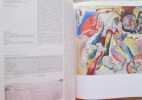19442 books for « christian p »Edit
-
Type
Artists book (3)
Book (19181)
Drawings (1)
Engraving (2)
Magazine (14)
Maps (2)
Music sheets (223)
New book (5)
Object book (1)
Photographs (7)
Posters (3)
-
Latest
Last 24h (22)
Last 3 days (16)
Last month (239)
Last week (35)
-
Language
Albanian (1)
Czech (1)
Dutch (8)
English (6)
French (19315)
German (42)
Greek (1)
Latin (6)
Romanian (1)
Russian (60)
Spanish (1)
-
Century
16th (8)
17th (50)
18th (277)
19th (360)
20th (8677)
21st (3410)
-
Countries
Belgium (793)
Brazil (1)
Canada (62)
China (4)
Côte d'Ivoire (49)
Denmark (398)
France (16052)
Germany (12)
Greece (10)
Italy (3)
Spain (14)
Switzerland (1971)
United Kingdom (11)
United States of America (62)
-
Syndicate
ALAC (55)
CLAM (34)
CLAQ (3)
CNE (4)
ILAB (8222)
NVVA (163)
SLACES (163)
SLAM (7361)
SNCAO (16)
Topics
- Africa (49)
- Alsace (160)
- Ampelography - wines (43)
- Andersen hans christian (435)
- Aquitaine (88)
- Archaeology (147)
- Architecture (172)
- Autographs (81)
- Belgium (72)
- Bernadac christian (220)
- Biography (168)
- Brittany (79)
- Children’s books (314)
- Christmas (45)
- Cinema (90)
- Civilisation (59)
- Collections (54)
- Comic strip (221)
- Concentration camp (54)
- Cooking (204)
- Culinary art (52)
- Dedication (153)
- Detective novels (79)
- Drawings (57)
- Economics (126)
- Education (132)
- Education - morals (63)
- Egypt (234)
- Esotericism (64)
- Ethnology (46)
- Fine arts (182)
- First edition (102)
- Football (50)
- Football (48)
- Freemasonry (59)
- Genealogy (54)
- Genet jean (49)
- Geography (126)
- Germanic languages (94)
- Germany (75)
- Guide books (89)
- Helvética (139)
- History (741)
- Hitler (56)
- Humour anecdotes (50)
- Industrial arts & crafts - fine arts (86)
- Jacq christian (519)
- Journalism (49)
- Laborde christian (66)
- Law (166)
- Literature (1288)
- Magazine (132)
- Mathematics (68)
- Medicine (169)
- Megret christian (55)
- Military arts (52)
- Millau christian (61)
- Montaignac christian (97)
- Motor vehicle (54)
- Music (53)
- Navy (66)
- Newspapers press (208)
- Painting (67)
- Paris (103)
- Petitfils jean-christian (62)
- Philosophy (218)
- Photography (207)
- Plume christian (49)
- Poetry (276)
- Policy (161)
- Provence (53)
- Psychology (98)
- Regionalism (199)
- Religions (175)
- Review (187)
- Reviews (166)
- Rock (123)
- Rugby (45)
- Scandinavian literature (59)
- Sciences (105)
- Scores (231)
- Social sciences (49)
- Sociology (65)
- Songs (206)
- Sports (66)
- Sudan (79)
- Switzerland (150)
- Tales (110)
- Tea (55)
- Teaching (48)
- Terrain (50)
- Theatre (76)
- Theology (61)
- Travel (106)
- Various (161)
- War (317)
- Wine (58)
- Youth (85)
- Zoology (45)
- Zuber christian (138)
Jean-François Briant Christian Henry Hôtel de Ville de Paris 27 Janvier 30 Mars.
Catalogue à l'Hôtel de ville de Paris, 1993. In-4 broché (27 x 24 cm), non paginé. Illustré d enombreuses reproductions en couleurs hors-texte.- 400g. - Comme neuf.
Geisha ou le jeu du shamisen. Tome 2
Futuropolis (4/2018)
LIVRE A L’ETAT DE NEUF. EXPEDIE SOUS 3 JOURS OUVRES. NUMERO DE SUIVI COMMUNIQUE AVANT ENVOI, EMBALLAGE RENFORCE. EAN:9782754822855
Shutter Island (Bande déssiné
CASTERMAN; Illustrated édition (7 octobre 2009)
Livre à l'état de neuf, très frais sans annotations ni défauts dissmulés.
Ruines Romaines de l'Algérie. KABYLIE DE DJURDJURA.
Paris, Imprimerie de J. Claye, 1868. In-4 relié de pleine toîle écrue (28,5 x 19 cm), titre doré sur pièce de titre rouge sur le dos, couverture originale conservée, 189 pages + 17 pages d'Inscriptions en reproduction + 17 planches hors-texte dont une dépliante + 1 grande carte en couleurs repliée : "Carte de la Kabylie de Djurdjura dressée par le Capitaine d'Etat-Major Ch. de Vigneral", au format 80 x 56 cm). A sommaire : Cercle de Dellys, de Tizi-Ouzzou, de Dra-el-Mizane, de Fort-Napoléon - Territoire civil d'Alger (Alma) - Annexe des Beni-Mansour - Cercle de Bordj-Bou-Arrérod - Cercle de Sétif - Cercle de Bougie - Voies romaines, Géographie comparée - Inscriptions.- Envoi autographe signé de l'auteur (dédicace. ). Exemplaire très frais, en très bon état, rare.
Les p'tites poules
Pocket Jeunesse (11/2019)
LIVRE A L’ETAT DE NEUF. EXPEDIE SOUS 3 JOURS OUVRES. NUMERO DE SUIVI COMMUNIQUE AVANT ENVOI, EMBALLAGE RENFORCE. EAN:9782266294133
Les p'tites poules
Pocket Jeunesse (11/2019)
LIVRE A L’ETAT DE NEUF. EXPEDIE SOUS 3 JOURS OUVRES. NUMERO DE SUIVI COMMUNIQUE AVANT ENVOI, EMBALLAGE RENFORCE. EAN:9782266299305
Les P'tites Poules - Album collector (Tomes 01 à 04) (01
Pocket Jeunesse (7 octobre 2010)
Livre à l'état de neuf, très frais sans annotations ni défauts dissmulés.
Les P'tites Poules - La poule au bois dormant (13
Pocket Jeunesse (2 octobre 2014)
Cartonné, comme neuf.
PAUL ELUARD.- Catalogue établi par Christian Labbaye.
Montbéliard, Atelier des Halles, Exposition 18 nov.-17 déc. 1972. Catalogue in-4 broché, 84 pages, chronologie, Catalogue de 344 oeuvres du poète, bibliographie, photographies hors-texte. Très bon état.
Art Dico : À la découverte de lettres illustrées du dictionnaire.
Editions Alternatives, 2005. Grand in-8 broché (24 x 15 cm), 160 pages. Pour son centième anniversaire, Le Petit Larousse a demandé à Christian Lacroix d'habiller ces bandeaux. L'auteur a consulté des centaines de dictionnaires pour sa recherche des bandeaux de présentation des lettres de l'alphabet. Il a recrée ainsi un nouveau dictionnaire de l'illustration et de lettrines typographiques.- 510g.- Etat neuf.
Untel, Père & Fils.
Cercle d'Art, 1998. In-4 relié sous jaquette imprimée (31 x 26 cm), non paginé, illustré de belles photographies hors-texte en noir et blanc de Christian Délécluse, textes de Jean Vautrin.- 1,3kg.- Comme neuf.
Le roman des noeuds.
L'état des lieux.- Editions de la Différence / Maison de la Culture de la Rochelle, 1987. In-4 broché (24 x 21 cm), couverture illustrée à rabats, 119 pages, illustré de nombreuses reproductions en noir et en couleurs des oeuvres de Christian Jaccard, textes de Bernard Noël, notes sur les objets et leurs instances par Christian Jaccard.- 500g. - Excellent état.
de Rethy, Esmeralda & Jean-Louis Perreau - CHRISTIAN DIOR
Reference : 29970
(1999)
ISBN : 2904420991
Monsieur Dior et nous : 1947-1957
Anthese, 1999. Grand in-4 relié sous jaquette illustrée (36,5 x 26,5 cm), 127 pages abondamment illustrées de photographies et dessins de Mr Christian, DIOR. - 1620g.- COMME NEUF.
Les Amants dAvignon. Avec un portrait par Christian Bérard
Editions Pierre Seghers, 1945, in-4 broché de 89 pages, couverture rempliée, illustré d'un portrait de Christian Bérard. LR400g. UN DES 180 EXEMPLAIRES SUR VELIN DU MARAIS, après 30 sur Vidalon. Exemplaire n° 153. Corps frais aux pages non découpées, brochure solide et couverture en très bon état. BEL EXEMPLAIRE DANS UN RARE ETAT DE FRAICHEUR.
Tous nos ouvrages sont collationnés et complets, sauf mention particulière.
[COLETTE] WILLY et Colette WILLY. - BERARD Christian (Lithographie de).
Reference : 24525
Claudine s'en va.
Monte-Carlo, 1946, in-8 broché de 260 pages, couverture rempliée, lithographie de Christian Bérard. L200g. Cette édition a été tirée à 3000 exemplaires numérotés de 1 à 3000. Exemplaire N° 1767. Très bon état.
Tous nos ouvrages sont collationnés et complets, sauf mention particulière.
DANSE COUNTRY EN LIGNE -LA- NIVEAU DEBUTANT
CHRISTIAN ROLLAND
LIVRE A L’ETAT DE NEUF. EXPEDIE SOUS 3 JOURS OUVRES. NUMERO DE SUIVI COMMUNIQUE AVANT ENVOI, EMBALLAGE RENFORCE. EAN:9782953818437
ANTHOLOGIE DE LA FLAGELLATION CORPORELS
Sabine Fournier
De Christian Defort, chez Sabine Fournier, broché, comme neuf.
Hans Christian Andersen Fairy Tales
Chiltern Publishing (1/2025)
LIVRE A L’ETAT DE NEUF. EXPEDIE SOUS 3 JOURS OUVRES. NUMERO DE SUIVI COMMUNIQUE AVANT ENVOI, EMBALLAGE RENFORCE. EAN:9781914602528
Kandinsky oeuvres de Vassily Kandinsky (1866-1984)
Centre Georges Pompidou, Musée national d'art moderne, 1984. In-4. boché (30 x 23,5 cm), 495 pages, nombreuses reproductions en couleurs et en noir et blanc dans et hors texte. Catalogue richement illustré de l'exposition au Musée National d'Art moderne du 30 octobre 1984 au 28 janvier 1985.- Très bon état.
Juan Gris - Correspondance Dessins 1915 -1921.
Editions du Centre Georges Pompidou, 1990. Grand in-8 cartonné (23,5 x 20 cm), cartonnage éditeur rose avec vignette illustrée, 150 pages - 25 reproduction en couleurs hors-texte. Texte etabli et annote par C. Derouet ; Ouvrage accompagnant l'exposition presentée à Ivam Centre Julio Gonzalez et au Centre Georges Pompidou en 1990-1991. Très bon état.
La princesse de Clèves : illustée par Christian Lacroix
Gallimard (10/2018)
LIVRE A L’ETAT DE NEUF. EXPEDIE SOUS 3 JOURS OUVRES. NUMERO DE SUIVI COMMUNIQUE AVANT ENVOI, EMBALLAGE RENFORCE. EAN:9782072738494
Mon île de Montmajour : Christian Lacroix
Actes Sud (7/2013)
LIVRE A L’ETAT DE NEUF. EXPEDIE SOUS 3 JOURS OUVRES. NUMERO DE SUIVI COMMUNIQUE AVANT ENVOI, EMBALLAGE RENFORCE. EAN:9782330019334
BASES DU MAMBO ET DE LA SALSA PORTORICAINE -LES- NIVEAU DEBUTANT
CHRISTIAN ROLLAND
LIVRE A L’ETAT DE NEUF. EXPEDIE SOUS 3 JOURS OUVRES. NUMERO DE SUIVI COMMUNIQUE AVANT ENVOI, EMBALLAGE RENFORCE. EAN:9782952675345
Christian Marclay and Steve Beresford: Call and Response
Distributed Art Publishers UK (6/2022)
LIVRE A L’ETAT DE NEUF. EXPEDIE SOUS 3 JOURS OUVRES. NUMERO DE SUIVI COMMUNIQUE AVANT ENVOI, EMBALLAGE RENFORCE. EAN:9781938221309
Christian Lacroix Heritage Collection Mam'zelle Scarlett
Galison (11/2021)
LIVRE A L’ETAT DE NEUF. EXPEDIE SOUS 3 JOURS OUVRES. NUMERO DE SUIVI COMMUNIQUE AVANT ENVOI, EMBALLAGE RENFORCE. EAN:9780735369221
 Write to the booksellers
Write to the booksellers
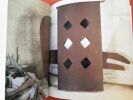


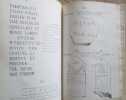





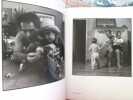

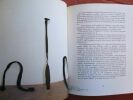
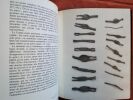

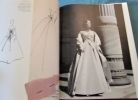
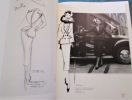

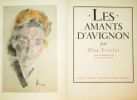
![Claudine s'en va. . [COLETTE] WILLY et Colette WILLY. - BERARD Christian (Lithographie de).](https://static.livre-rare-book.com/pictures/DEJ/24525_1_thumb.jpg)

